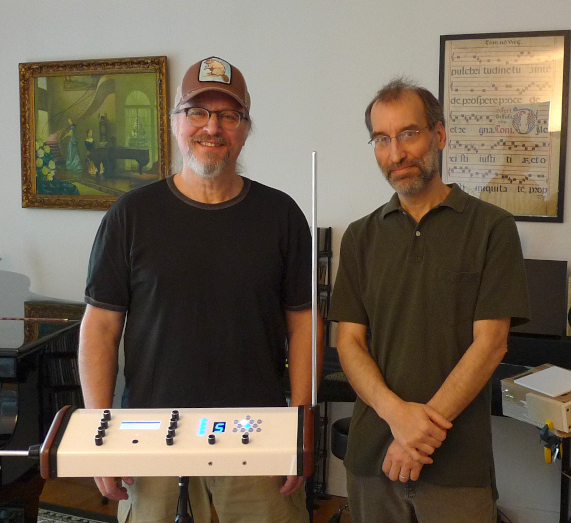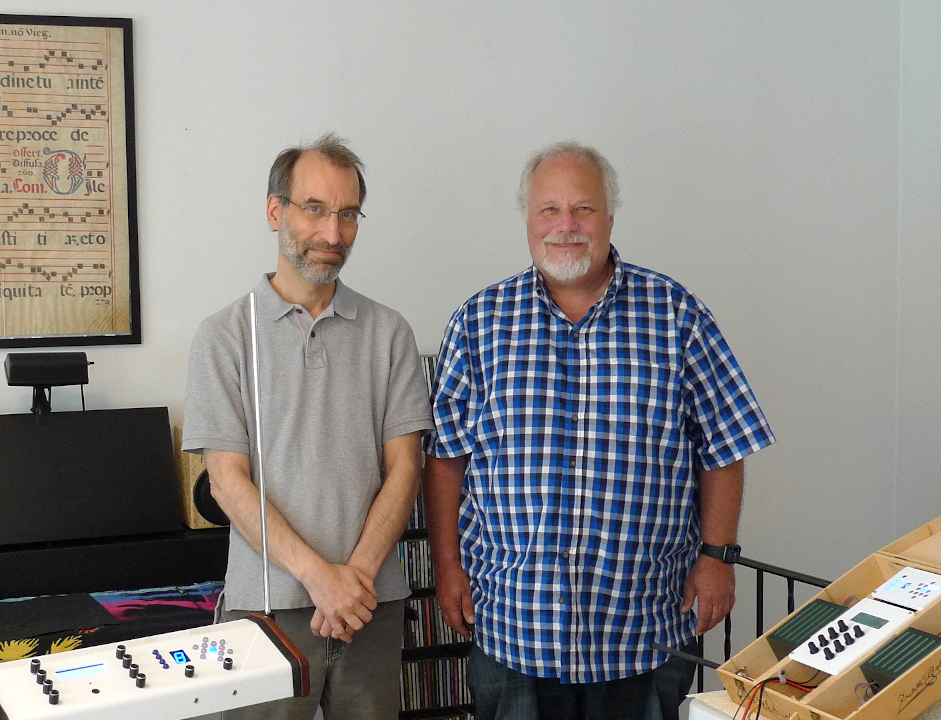"1. Is it possible to offer kits with both? Then let people play and compare." - ContraDude
For all my talk here, I don't want to discourage anyone from experimenting with the kit however they want, but I guess I'm anticipating a certain amount of trouble with rods, which could give the D-Lev a bit of an undeserved black eye in some scenarios, and could generate support headaches. Folks think "Theremin" and they think rods, but I want them to keep an open mind about antenna geometry, and go into this with some knowledge of the engineering behind it all. I intend to include a couple of cheeser plates, like aluminum foil on cardboard, because it needs to be playable out of the box - this is me subtly introducing the idea of plates in their minds, but also they're much easier to include than rods. For your kit I'll include both for you to experiment with.
"2. I like the rubber ducky antennas ![]() With a digital theremin, does the length of the antenna play a role in performance?"
With a digital theremin, does the length of the antenna play a role in performance?"
The intrinsic capacitance goes up with surface area, and a longer antenna (for a given diameter) will have more surface area. But a longer antenna has less mutual capacitance with the hand in the mid and near fields. The main reason analog Theremins have long rod antennas is to somewhat linearize the field geometrically. But when linearization can be implemented mathematically, the question then is: what is the ideal antenna geometry? From an engineering perspective, a capacitor is formed by two plates, and while the hand isn't exactly plate shaped, a rod definitely isn't. From a player perspective, a plate presents a softer and easier to hit target, though some who are highly adapted to rods might not appreciate nor welcome that.
"All I ask is for all players to be advised that you may encounter some differences in the feel of plate pitch antennas, and for new players to be careful what antenna system you choose to learn on. The time investment that you make in learning to play any musical instrument makes your initial choices extremely important. Sometimes the best way to decide how or what to play is to look at the players that you would like to emulate and see what they do and what equipment they use. BTW - the volume antenna is much less of transition issue whether you choose a plate or loop." - pitt8rh
Ah, very well put! Honestly, I'm not bringing plates up (yet again) to poke anyone in the eye, it's just that I find myself talking about this subject a fair amount during show and tell. Perhaps I'm too adamant about it in the first place, but as the number of units running around in the world increases, the potential headaches for me multiply, so I'm doing everything I humanly can to nip any possible issues in the bud. Making Theremins in any quantity is sorta nuts in the first place, teetering as they are on a knife edge of physics, in a polluted environment of AC mains fields, fluctuating grounds, and mammoth AM broadcasters.
Next up: The traditional volume field is backwards! (I keed.)
[EDIT] Yesterday's very special guest was none other than Rob Schwimmer!:

From left to right: Rob, me.
Rob was on his way from NYC to PA and dropped by for a couple of hours. It was fairly mesmerizing to watch him play the Theremin and my wife's piano, he's quite fantastic on both! And a really nice person. I'm working to get Rob a D-Lev, not sure at this point what form that might take.


